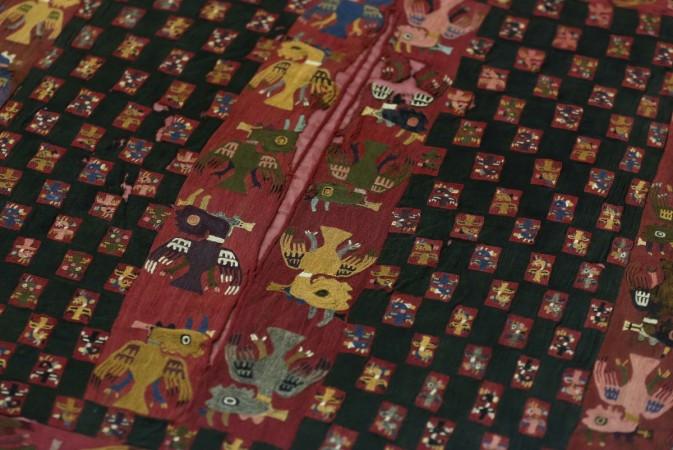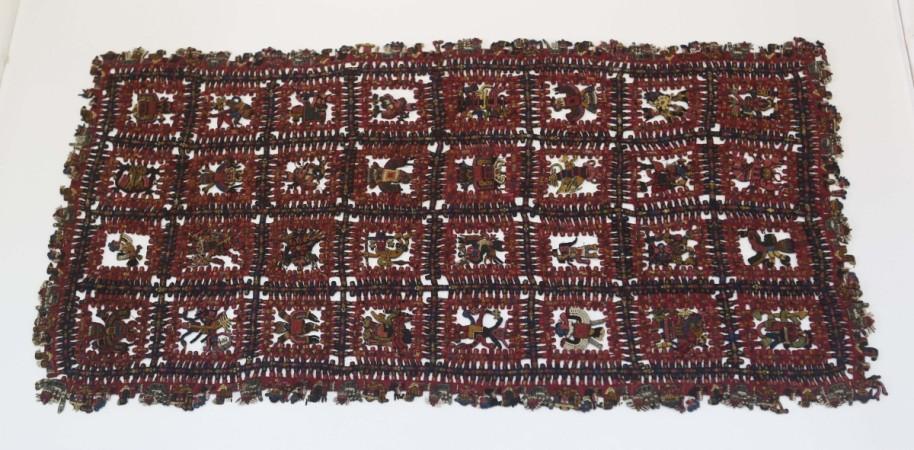

An ancient funeral shroud from Peru that dates back to pre-Inca period went on display for the first time in Lima. The shroud was smuggled from the country over 80 years ago by a Swedish diplomat.
Scientists have tested the shroud using chemicals and determined it to be more than 2,000 years old. The cloth made from alpaca wool, was originally discovered in a desert of South Lima, and the artifacts appeared to be from the Paracas civilization – the group of people that were well known for their complex textile weavers.
The shroud is well preserved, which makes it one among the rarest artifacts to survive so long. The dry climate of the desert is responsible for shroud's longevity , according to archaeologists.
The discoveries of such aged textiles, across the world are rarer than a precious metal. Finding Roman textile during these days is extremely difficult because nothing was preserved then, mostly because textiles are fragile and very few countries have preserved fabrics, according to Krzysztof Makowski, a University of Warsaw archaeologist who has studied the shroud as a professor at the Catholic University of Peru, reported Fox News.


The unique and complexly colored shroud, measured 41 inches by 21 inches (104 centimeters by 53 centimeters). It includes around 80 varieties of color tones and subtones such as blue, yellow, red, green and orange. The cloth is divided into 32 frames decorated with items. The designs of the shroud resemble condors, frogs, cats, corn, cassava and human-like figures.
Some researchers believe the designs of the shroud depicted a sort of chart to track down farming seasons, according to Jahl Dulanto, an archaeologist at the University of Illinois at Urbana-Champaigne and who led the Paracas investigation team at the Catholic University of Peru. The artist's complex weave technique is still unclear for the experts.
Until now, the shroud had been on display at the Museum of World Culture in Gothenburg, Sweden. Few other items along with the shroud had flown back to Peru after a friendly agreement with the museum.
The shroud is one among many artifacts that Peru has been working to retrieve from overseas countries over the last few years. Peruvian officials are in the process of reclaiming its cultural antiquities. It recovered over 3,800 pre-Incan items in June that was held for many years in Argentina. In 2011, Yale University returned 366 items from the Incan city of Machu Picchu that was held for more than a century. It is expected that the Gothenburg museum may also return the rest of the Paracas textile items in the next seven years.















